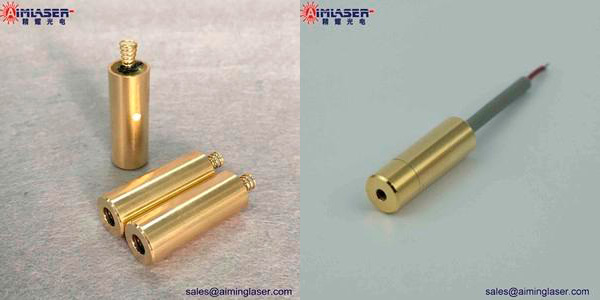The advantages of blue semiconductor lasers compared with near-infrared semiconductor lasers and green solid-state lasers.
With a wide process window, Blu-ray can handle every stage of cell manufacturing, and can weld thicker and multiple materials such as copper, gold and stainless steel several millimeters thick. It is ideal for the manufacture of prismatic cells, cell casings, and the integration of battery packs and cells.

Using a blue semiconductor light source with a wavelength of 450 nm, the copper material can be melted in the thermal conduction mode, so that the molten pool geometry of the thin copper material can be precisely adjusted. Stable energy absorption and precise control of the thermal conduction process are especially important for deep penetration welding of thin copper materials, primarily because it helps prevent high pressures that can cause severing or spattering of the thin material. These phenomena are especially likely to occur when soldering stacked thin copper foils, which may create irregular gaps that are difficult to control due to warping of the stacked foils. When butt welding was performed on 34 stacked copper foils using a 580W blue diode laser and a speed of 2m/min, weld widths >0.8mm could be formed with minimal porosity and low undercut. For fillet welding on the edges of the foil stack, the ends of the foil were successfully melted to a high cross-sectional area and fully adhered to the solid foil. In both butt and edge welding, perfect mechanical connection and very good electrical conductivity are achieved.
The copper foil was scanned with a laser from the top surface at a speed of about 10 mm/s in a state where three copper foils were stacked at a thickness of 30 um. Since the output of the fiber with a core diameter of 100 um is concentrated at a projection ratio of 1:1, the diameter of the laser spot on the sample surface is also 100 um, which achieves good welding quality and suppresses the influence of heat on debris and the surrounding environment.
The printer is capable of making pure copper using a blue-light semiconductor laser developed by Osaka University. A laser focused spot diameter of 100 um is achieved on the powder bed, and pure copper with high electrical conductivity and high thermal conductivity can be laminated, which was difficult to melt with near-infrared lasers before, and this technology is expected to be applied to aerospace and electric vehicles, etc. industrial field.
Greater penetration depth also opens up electric vehicle applications, and EV manufacturers are turning to bar winding designs to maximize thermal and electrical efficiency. The three blue laser hairpin welds show consistent quality, which is critical for improving production efficiency. Blue lasers can produce hairpin welds, which are important for high-density, high-strength motor manufacturing.
High power and high brightness also increase the flexibility of the welding process, making it possible to expand the range of processing materials. For example, copper and zinc in brass have significantly different thermal properties, which pose challenges for high-quality welding, but blue industrial lasers are easily handled and can now weld brass materials commonly used in appliance production. Preliminary research shows that blue lasers will be able to effectively solve the difficult problem of welding dissimilar metals. Dissimilar metal welding is a challenge because each material has unique thermal, optical, and mechanical properties. Welding of dissimilar metals often results in the formation of intermetallic compounds, regions of dissimilar alloys that compromise the mechanical and electrical properties and consistency of the joint. The latest generation of blue diode lasers has a wide range of process parameters and can weld dissimilar materials with minimal defects. While copper and zinc in brass have significantly different thermal properties that pose challenges for high-quality soldering, for blue diode lasers they are easily handled.